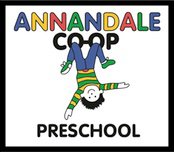In this “FROM THE TEACHERS” post, we discuss the fundamentals of food allergy and how to address this in a group setting like the co-op.
Even if your child is not one of the estimated 15 million Americans affected by food allergies, she will undoubtedly share a classroom at some point with children who are. The prevalence of food allergy has risen dramatically in the past decades. Today, nearly 8% of children in the U.S. under the age of 18 have a food allergy. That’s about two kids per classroom across the country. Because of the potentially life-threatening nature of some food allergies, it is important for all parents to be informed. This article will explain the basics.
What is a food allergy?
A food allergy occurs when a person’s immune system mistakenly attacks harmless food proteins, causing an allergic reaction. When a person eats the food they’re allergic to, tiny molecules called IgE (immunoglobulin E) antibodies (which are produced in unusually large amounts by the bodies of food allergic people) attract the proteins from that food. The IgE antibodies are like tiny antennae that sit on “mast cells” which are spread throughout the body. When the food proteins attach to the IgE antibodies, the mast cells explode, sending chemicals, including histamine, throughout the body. These chemicals are what cause the symptoms of an allergic reaction. Research is taking place to discover why food allergies are on the rise in developed countries across the world. Scientists are also researching new ways to treat and even to eliminate food allergy. Many clinical trials are underway in the U.S. and Europe.
What is the difference between a food allergy and a food intolerance?
A food allergy is very different from a food intolerance (such as lactose intolerance), which are adverse reactions of the body to certain foods, but do not involve the immune system. Food allergies are “IgE mediated” (see above), while food intolerances are not. Unlike food allergies, food intolerances do not result in death and are most often characterized by gas, bloating and abdominal discomfort.
Which foods are most likely to cause an allergic reaction?
While virtually any food can cause an allergic reaction in a particular individual, there are eight foods that account for 90% of the allergic reactions in the United States. These are peanuts, tree nuts (such as walnuts, pecans, etc.), milk, egg, soy, wheat, fish and shellfish.
Who is at risk of developing a food allergy?
Food allergies affect people of all races and ethnicities and can begin at any age, although most usually begin in childhood. Risk factors for developing food allergy include having a parent who suffers from any type of allergic disease, including asthma, eczema, food allergies and environmental/seasonal allergies. Typically, allergies to peanuts, tree nuts, fish and shellfish tend to be lifelong. Allergies to milk, eggs and soy are more likely to be outgrown by age 16.
What are the common symptoms of a food allergy?
The following are all symptoms of an allergic reaction to food: hives, eczema, abdominal cramps, vomiting, tingling in the mouth, swelling of the tongue and throat, difficulty breathing and anaphylaxis. Any of the symptoms/reactions on this list can occur within minutes to hours of the ingestion of the allergen. Anaphylaxis is the most serious reaction to a food allergy. It is a severe allergic reaction which involves several of the symptoms listed above and can be fatal if not treated quickly enough (within minutes) with injectible epinephrine. Food allergy is the most common cause of anaphylaxis outside of the hospital setting. Because symptoms are not always visible, it is useful to familiarize ourselves with words and phrases that young children typically use to describe an allergic reaction. The Food Allergy Research and Education (FARE) website has compiled a list of things children commonly say when they are experiencing an allergic reaction to food. Here is a sampling from that list:
“It [my tongue] feels like there is hair on it.””My mouth feels funny.”
“There’s something stuck in my throat.”
“My lips feel tight.”
“It feels like a bump is on the back of my tongue [throat].”
What is the treatment for food allergies/anaphylaxis?
Currently there is no cure for food allergies. The only way to prevent a reaction is to completely avoid the food to which one is allergic. It is important to note that exposure to even the tiniest amount of food protein can cause a reaction, so contamination of a safe food with the residue of an allergen that shared the same preparation surface or equipment, for example, can cause a reaction. In case of a severe allergic reaction, a person with a food allergy should be injected with epinephrine as soon as possible. Epinephrine is a powerful antihistamine and is the only medication that can reverse the symptoms of anaphylaxis. People with severe food allergies should have injectible epinephrine (EpiPen, AuviQ or Adrenaclick) with them at all times. After using epinephrine, call 911. The effects of epinephrine last only ten to twenty minutes and symptoms may return. It is important for a food allergic person who has had a reaction to be seen by a doctor at the emergency room immediately for follow-up treatment.
How can I keep a person with food allergies safe?
Wash your hands and face thoroughly with soap and hot water after eating or handling known allergens. (Face washing is just as important as hand washing: even kisses can cause allergic reactions.)
Clean surfaces and utensils used to prepare food for a person with food allergies to avoid cross contamination (which can occur when shared equipment is used to process or prepare food containing allergens and food that does not contain allergens). Lysol wipes, bleach-based cleaners and Formula 409 have been shown in studies to be effective at removing peanut proteins and residue from surfaces.
Read labels on packaged and processed foods. Food manufacturers are required by law to list the top eight allergy-causing foods on their labels. Avoid not only food that contains the allergen but also foods that “may contain” the allergen or are “processed on shared equipment” with food containing the allergen.
Do not offer any food to an allergic child (even if you think it is safe) without first asking their parent.
What should I do if I suspect my child may have a food allergy?
Make an appointment with a board-certified allergist as soon as possible and avoid the suspected allergen(s) until after the appointment. Some methods of food allergy testing are unproven and may be inaccurate or even lead to increased harm, so it is very important to see a certified allergy specialist. The American Academy of Allergy, Asthma and Immunology is a good resource when looking for a physician. There are two tests commonly used to diagnose food allergy. One is the skin-prick test in which small droplets of common allergens are placed on the skin and then scratched into the skin to test for a reaction. The other is a blood test called the RAST (radioallergosorbent test) which tests IgE antibody levels for particular foods. An allergist may also use an oral food challenge (conducted in the safe, controlled environment of the doctor’s office) or a trial elimination diet to aid in diagnosis.
How are food allergies handled at our preschool?
Annandale Cooperative Preschool is a nut-free school. This means that you may not bring any nuts or products containing nuts to school for snack. It also means that you many not send any nut products in your child’s lunch when he or she stays for Extended Day. If your child has a food allergy, be sure to make your child’s teacher and the Director aware of the allergy. Let them know the type of reaction your child may have and the foods that should be avoided. Your teacher will communicate this information to the rest of the parents in the class. Also be sure that any medication your child may require to treat an allergic reaction (such as Benadryl or an EpiPen) is kept at the school with the appropriate paperwork, completed and signed by your child’s doctor.
For more information on food allergies, check these resources:
Food Allergy Research and Education
www.foodallergy.org
National Institute of Allergy and Infectious Diseases
www.niaid.nih.gov
The American Academy of Allergy, Asthma and Immunology
www.aaaai.org/home.aspx
The Center for Disease Control
www.cdc.gov/healthyyouth/foodallergies/publications.htm
Kids with Food Allergies Foundation
www.kidswithfoodallergies.com
Allergy Moms
www.allergymoms.com

